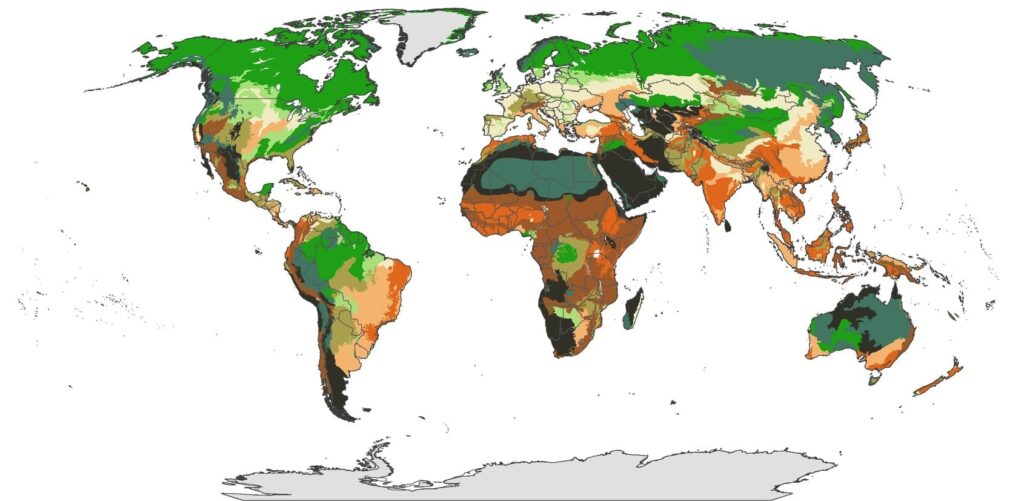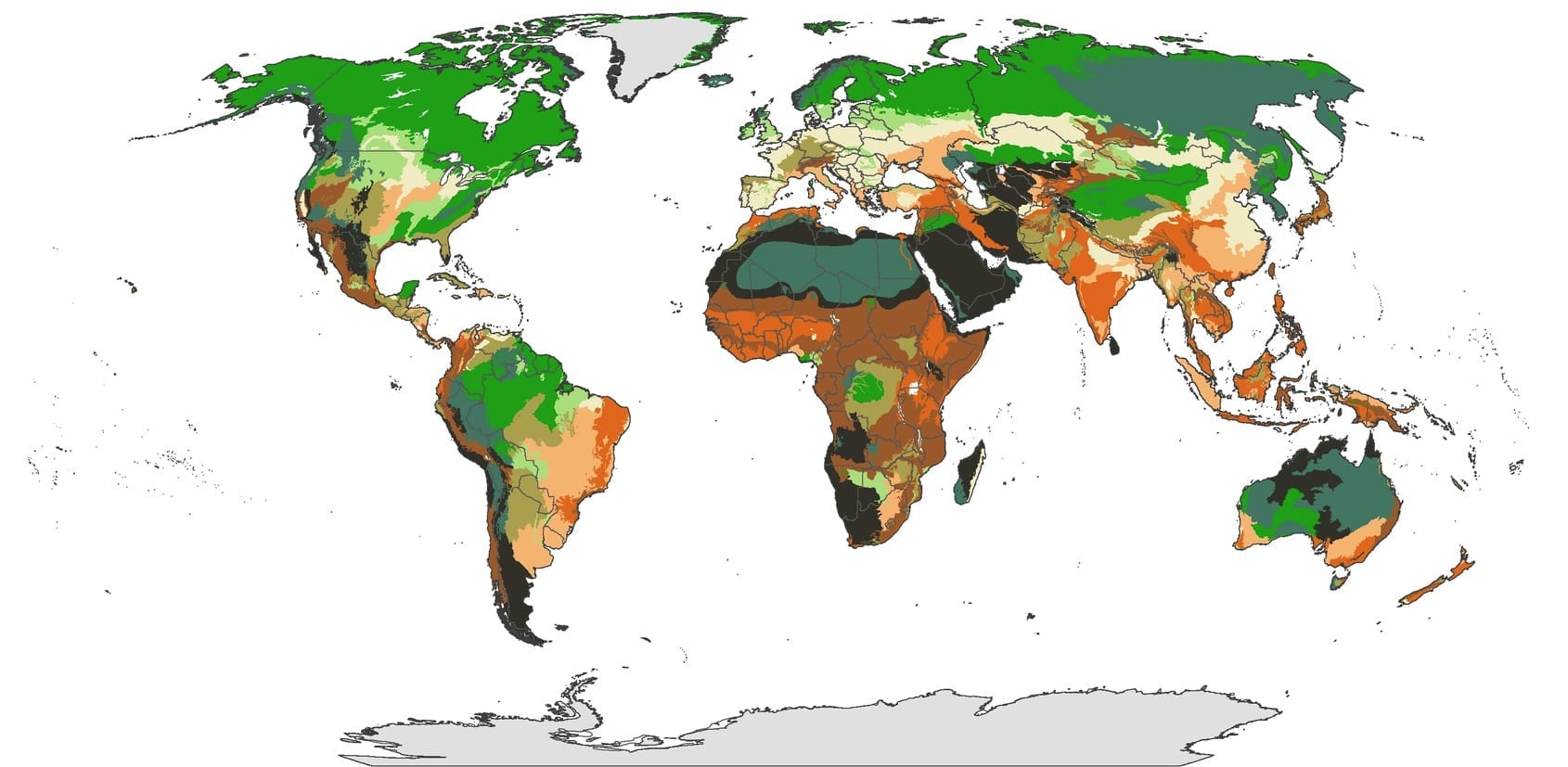
via theconversation.com
Targeting conservation efforts to safeguard biodiversity, rather than focusing on charismatic species, could make current spending on threatened birds four times more effective, a new study has shown.
The research, by Imperial College London and the Zoological Society of London (ZSL), is the first to link the costs of protecting threatened species with their genetic distinctiveness, measured in millions of years of evolution. It identifies the top 20 birds for safeguarding maximum biodiversity with minimum spend, of which number one on the list – Botha’s Lark – currently receives no conservation spending at all.
The researchers focused on some 200 birds categorised in the International Union for the Conservation of Nature (IUCN)’s Red List as either Vulnerable, Endangered or Critically Endangered, in a study published today [January 5] in Philosophical Transactions of the Royal Society B.
They found that if conservation spending on these birds continues along current lines, only 85.9 million years of evolutionary history will be safeguarded, compared to a potential impact of 340 million years.
Dr James Rosindell, from the Department of Life Sciences at Imperial College London, explains: “We found that, spent wisely, £1 can preserve 26 years of bird evolution whilst in the worst-case scenario, it costs £2485 to save just a single year. So for the cost of a cup of coffee you could probably save a branch of evolution as long as your entire life. However, if you choose to spend your money poorly, you might only save a few hours’ worth, not much longer than the time it took you to drink the coffee.”
By adapting an approach already in use by ZSL, the researchers categorised the birds in terms of their risk of extinction and their evolutionary distinctiveness, looking not only at how far they had diverged from other species, but also the relative extinction risk of their relatives. For each species they then calculated the number of years of evolutionary history that could be safeguarded for 50 years by conservation action on that species. Finally, they combined these results with the estimated cost of reducing each species’ extinction risk by at least one Red List category within ten years.
The results gave the team a list of the top 20 birds on which conservation efforts should be targeted to maximise the impact of the spend in safeguarding evolutionary biodiversity.
Top of the list was the little known Botha’s Lark, a small brown bird that is only found in a restricted part of South Africa and on which no conservation efforts are made at all. Although not the most genetically diverse of the 200 birds, it gains top place because it would require little investment to protect it, making it a very cost-effective species to target.
The tooth-billed pigeon – a large pigeon with a hooked bill, found only in Samoa – gains second place because it is both evolutionarily distinct and the costs required to protect it are relatively low, although still three times the current spend.
Dr Samuel Turvey of ZSL stresses that this isn’t about stopping work on more high profile species, but about highlighting the benefits of better allocation of resources: “Our study looked at overall global spending for each species, and of course, the situation on the ground is much more complex, with conversation targets chosen for many different reasons. However, if we do believe that preserving biodiversity should be part of our conservation goals, then our study shows that current spending is fundamentally at odds with what we want to achieve.”
Read more: Global bird conservation could be four times more cost-effective
The Latest on: Global bird conservation
[google_news title=”” keyword=”Global bird conservation” num_posts=”10″ blurb_length=”0″ show_thumb=”left”]
via Google News
The Latest on: Global bird conservation
- BIRD FLU: Leading Global Experts Comment On Increasing Avian Flu Threat In US And Worldwideon April 26, 2024 at 10:24 am
Dr. Malik Peiris, Professor of Virology at the School of Public Health at The University of Hong Kong, and a leading global expert on the H5N1 virus said: ...
- You might find a rare species in your backyard: How global citizen science contributes to biodiversity knowledgeon April 26, 2024 at 9:28 am
While it can be hard for us to notice as we go about our busy lives, cities are filled with indigenous plants, fungi, insects, spiders and other little creatures, as well as birds, frogs and reptiles.
- Celebrate World Migratory Bird Day at Ken Reid Conservation Area on May 11on April 26, 2024 at 5:32 am
World Migratory Bird Day is on May 11 and to mark the occasion a variety of environmental events are planned at Ken Reid Conservation Area in Lindsay, Ont. “We are doing different guided walks ...
- KCZoo hopes community will participate in global competitionon April 22, 2024 at 10:26 am
KANSAS CITY, Mo. — The Kansas City Zoo & Aquarium wants the community to participate in the City Nature Challenge, a global competition where residents document wildlife in their city. The yearly ...
- Google Celebrates Earth Day 2024 with a Doodle Highlighting Global Conservation Effortson April 21, 2024 at 7:12 pm
Google unveiled a special doodle that draws attention to environmental conservation efforts across the globe. Each letter in the Google logo represents different regions and initiatives that ...
- Over AED 14.3 million provided to support global bird conservationon April 20, 2024 at 2:45 am
The Mohamed bin Zayed Species Conservation Fund (MBZF) has provided more than 390 grants of more than AED 14.3 million since its establishment to support the conservation of threatened bird species ...
- MBZF: Over AED14.3 million provided to support global bird conservationon April 19, 2024 at 12:31 pm
The Mohamed bin Zayed Species Conservation Fund (MBZF) has provided more than 390 grants of more than AED14.3 million since its establishment to support the conservation of threat ...
- Warning Issued for 80 Percent of Bird Specieson April 9, 2024 at 5:56 am
Species that are most under threat are less able to cope with the pressures of human-dominated environments, a study shows.
- The Clock Is Running Out on Migratory Birdson March 30, 2024 at 5:01 pm
But as global climate change causes spring to start earlier, birds such as western tanagers ... says that the migration research could inform conservation efforts in the future.
via Bing News











